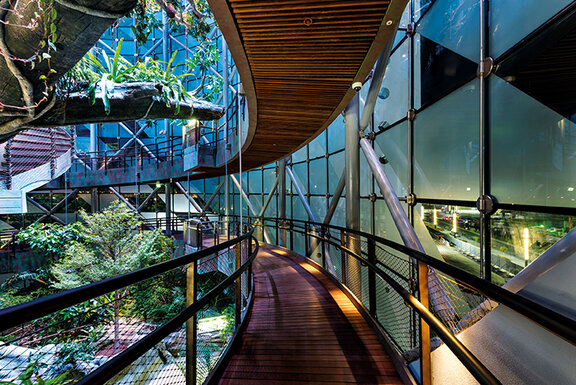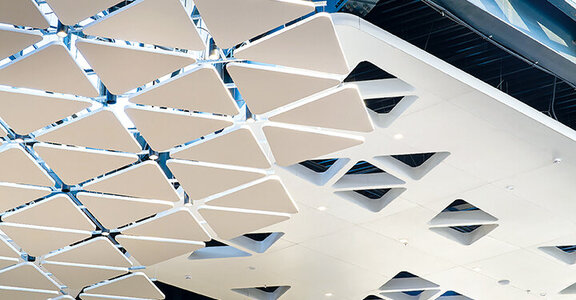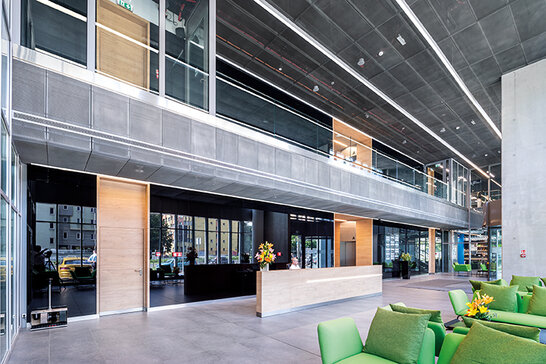
Making Architecture More Accountable
We are all aware of how much damage is being done to the planet, and this consciousness is what has put sustainability at the forefront of modern design.
It’s crucial that we approach this as more than just a passing trend, recognising that every decision we make has a substantial effect — both now and in the future. Architecture’s commitment to sustainable development is clearly set to continue. From the initial design, to the materials used, and on to the end of a ceiling’s life, there is a renewed focus on the lasting impact of our products.
Look to the pioneers
To understand the evolution of sustainable architecture, we have to look to the pioneers who went before us. Those who challenged perceptions about what could be achieved.
Since the 1930s, Frank Lloyd Wright’s philosophy of creating structures that were in harmony with both humanity and the environment set the standards for today’s widespread use of eco-friendly materials and renewable energy sources.
Renzo Piano, famed for The Shard in London and Pompidou Centre in Paris, creates sustainable architecture that doesn’t bend the environment to its own purpose, but instead places an understanding on nature, respecting flora and fauna, as well as exploiting light and wind.

Material matters
To improve sustainability, the choice of materials is a central consideration. Selecting materials with a circular life cycle and that are 100% recyclable minimises the negative effect on the planet.
Exploring the potential of existing structures is another route. Old or unused buildings can be transformed into contemporary new spaces, without wasting resources that are already in place. Installing a new ceiling is a simple way to reinvigorate, whilst maintaining the foundations and bringing a building up-to-date. Examples can be seen in the Moxy Hotel and Atende (both featured in this 2020 edition of the A Book), and located in Centrum Praskie Koneser, a regenerated vodka distillery in Warsaw.

Saving more than just the planet
Energy conservation is a simple way to reduce our environmental impact. A well-designed ceiling with high light reflectance will illuminate a room, reducing the need for electrical light outputs. By choosing a ceiling with good thermal qualities, the energy used for heating and cooling can be saved. These choices save the planet, and they save money too.
Being successful in our quest for sustainability is a commitment that can only be achieved if we all do our part. With the amount of options available, we can easily make the right choices. After all, sustainability is our future — far more than just a passing trend.